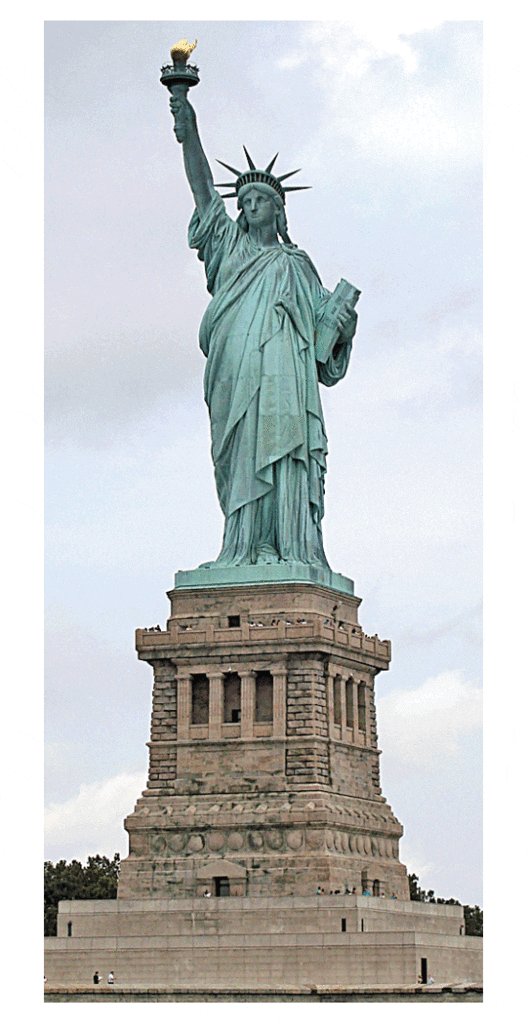
Beginning with the Siberian hunters who crossed the Bering landbridge about 30,000 years ago, United States has been populated with people from around the globe. Even the Statue of Liberty, symbol of American diversity, has French ancestry.
Most of the 4.5 Million who came between 1841 and 1861 were Irish or German. From 1880 through 1920 more than 23.5 Million new immigrants arrived. Women arriving alone were detained until someone arrived to assume responsibility for them. They came from 20 countries around the globe: From Italy, Korea, and Cuba from Saigon, Cologne, and from Liverpool. Most who came knew that success would be achieved with hard work. They opened a tailor shop in the Bronx, or worked in a sweatshop laboring for pennies a day. They became a pants-cutter from Prussia and a housekeeper from Poland.

Wikipedia photo
Ceremonies for the colossal statue of “Liberty Enlightening the World” began on Bedloe’s Island the afternoon of October 28, 1886. There were 2,500 invited guests who stood in a cold, wind-driven drizzle. Senator William M. Evarts of New York presented the completed shrine to U.S. president Grover Cleveland on behalf of the American fund-raising committee and the generous citizens of the land.
A 21-gun salute thundered across New York City’s harbor. Then came the whistles, cannon, foghorns, bands and the screaming crowd that began a frenzied cacophony. New York City was in a mood to celebrate. The police had been rounding up pickpockets and con men for days. Under a blanket of ticker tape, 20,000 marchers filed along with the horns and the bands from Buffalo. Then began a naval parade at the Battery, at the southern tip not far from the Statue of Liberty. The parade was the largest in the Nation’s history.
Twenty tugboats led with whistles shrieking, with streamers and scows and yachts and dredges behind them. “Bell spoke to bell and cannon to cannon, till all men of the thousands gathered in her honor knew that Liberty had been given and received,” a reporter observed. “Imagination can hardly conceive what to their tired eyes, weary with the hardships, the hopelessness and the cruelties of the Old World, this apparition must have conveyed.”
Officially, the statue was a gift from the people of France to the people of the United States. The date of July 4, 1776 was inscribed in Roman numerals on the tablet in the statue’s left arm, and emphasized the theme of independence. The idea for the statue was led by Edouard Rene Lefebvre de Laboulaye, a jurist and professor of comparative law and a devoted friend to the United States. He did not visit the United States, but he published a three-volume work on its history and a biographical study of Benjamin Franklin.
The sculptor was Frederic-Auguste Bartholdi. He began sketches for his heroic “Liberty” in 1869. He made the torch the dominant feature, trying it in left hand as well as right hand. He straightened the torso and added the radiant crown as he refined his design. Bartholdi was an idealist by nature and a republican by conviction.
In 1874 the French-American Union was formed to raise funds. Bartholdi found his site as soon as he sailed into New York City’s harbor. Then French fund-raising began with great fanfare in 1875. The social calendar included an ornate banquet at Hotel du Louvre when 200 guests enjoyed a 14-course meal. At the opera, artists performed Gounod’s cantata to “Liberty.” Money flowed in primarily from the wealthy in larger cities, but from small municipalities and anonymous individuals. One child wrote “I am a little girl only six years old and have 25¢ in my savings bank which I send to help build the Pedestal.”
“Give me your tired, your poor, your huddled masses yearning to breathe free,” begins the poem by Emma Lazarus and ends with “I lift my lamp beside the golden door.”

